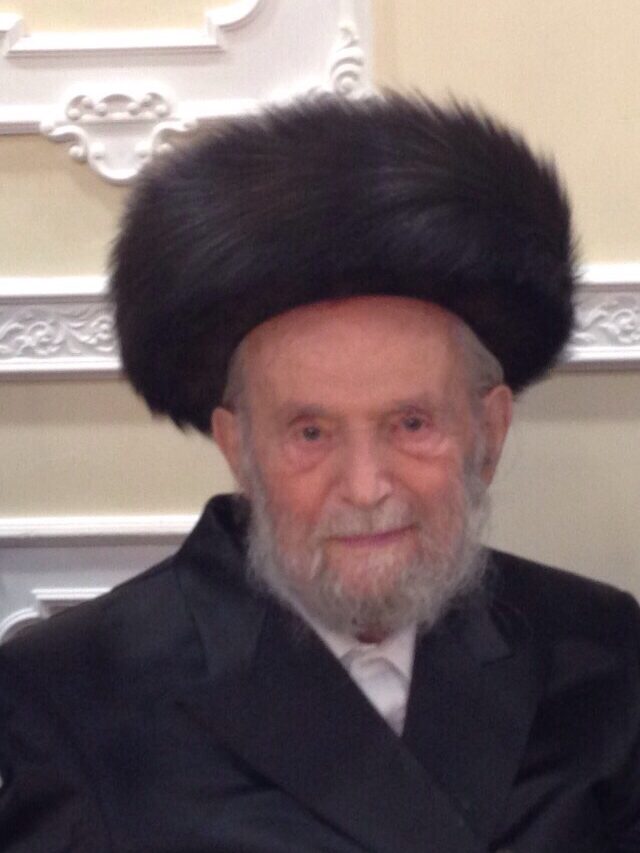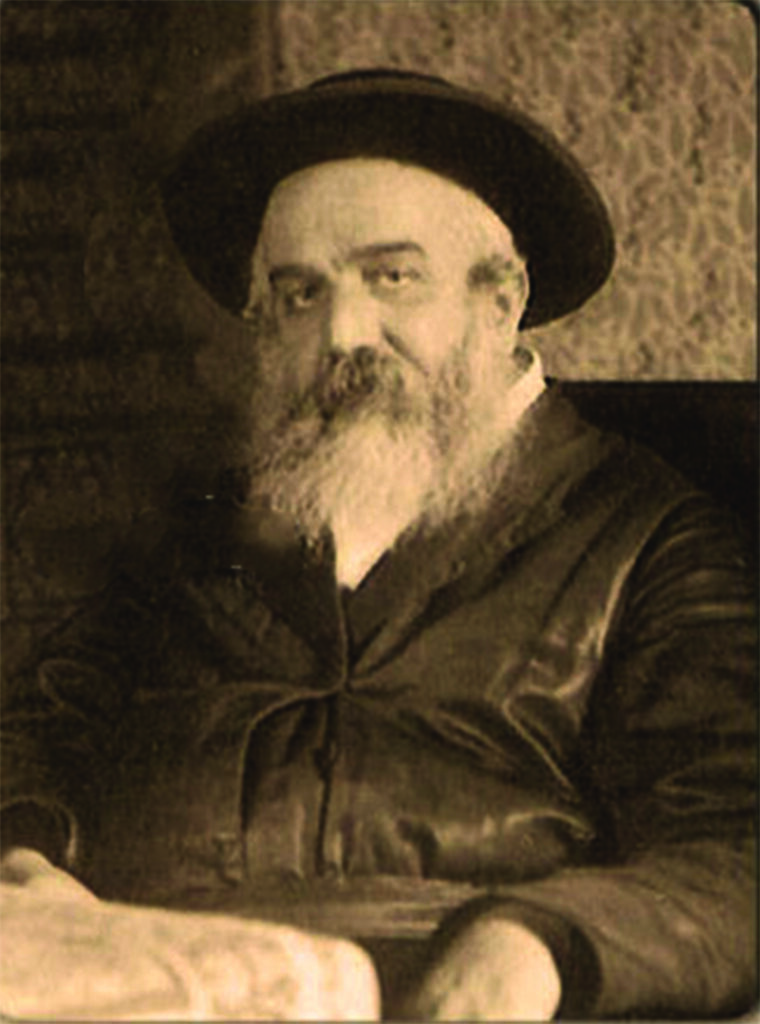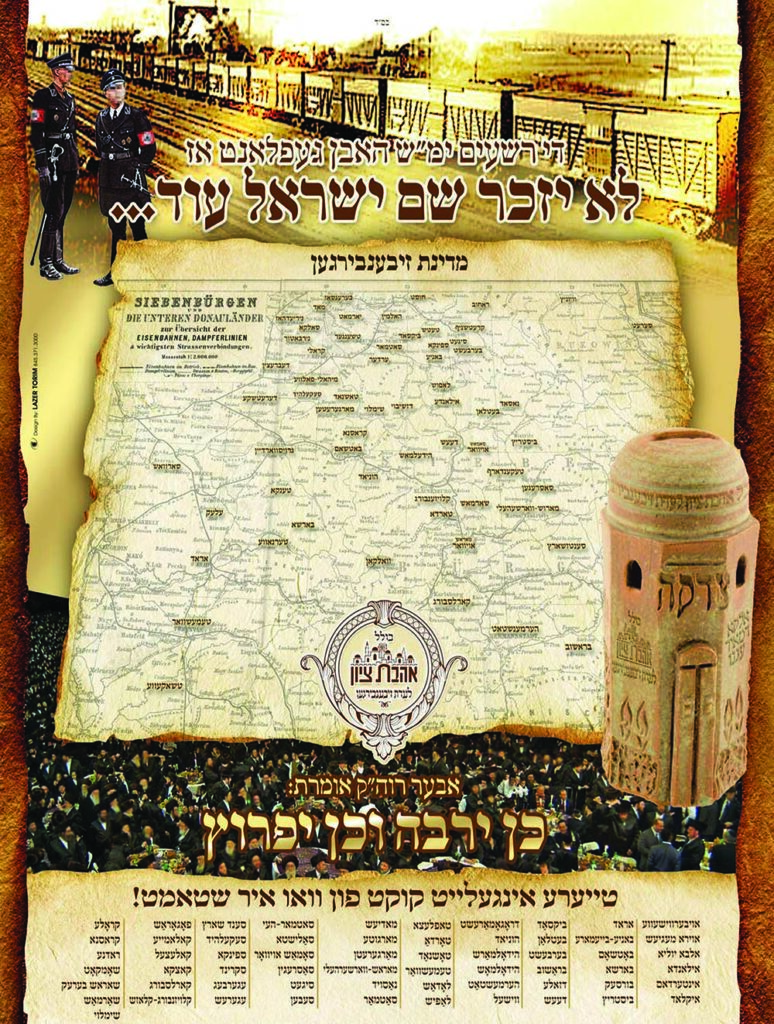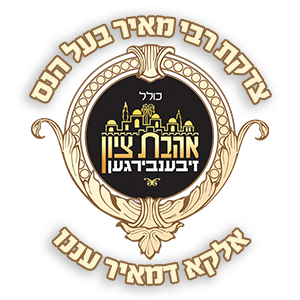ר’ דוד ב”ר אליעזר צבי ליפשיטץ ז’’ל – נלב”ע ב’ דחול המועד פסח ח”י ניסן תשע”ה לפ”ק היה חבר וועד הבעלי בתים של הצדקה הק’ – רבי מאיר בעל הנס זי’’ע כולל זיבענבירגען
The beautiful name of our unforgettable friend, the distinguished and renowned Rabbi David Lipshitz, with the phrase of blessed memory (z”l).
It is truly not among the easiest tasks to describe such an illustrious individual, a man of many qualities, a figure beloved by the community, who depicted the “olden days” with precise and appropriate colors. However, remaining silent is no longer an option.

Therefore, we will attempt to briefly present, to the best of our ability, a portrait of this noble person, his biography, his strong connection with the Munkatch community which he breathed his entire life until his final breath. Of course, we will also mention his extraordinary association with the ancient charity of Rabbi Meir Baal Haness “Kollel Ahavat Zion” in the community of Zinbergen in the Holy Land.
Rabbi David z”l was born in the city of Munkatch, on the 11th of Menachem Av, 5685 (1925), to his father, the distinguished Rabbi Eliezer Zvi z”l, one of the esteemed members of the city, son of Rabbi Avraham z”l, a son of the renowned righteous scholar Rabbi Shabtai Lipshitz zt”l, the dayan and Mo”etz in the city of Orshiva, and author of “Brit Avot” and other works, who answered questions of Halacha throughout Zinbergen and its surroundings.

His mother, Mrs. Hessa Rachel hy”d, was a daughter of the distinguished Rabbi Avraham David Weiser z”l, from a distinguished family in Israel, a descendant of the holy tzadik, Rabbi Yechezkel of Krakow, author of “Chanukat HaTorah,” the Tosafot Yom Tov, the Maharshal, and more.
His father, Rabbi Eliezer Zvi z”l, was named after the holy tzadik Rabbi Eliezer of Komarno and was a true chasidic Jew, known to be close to the holy Minchat Elazar of Munkatch. From a young age, young David was close to the Munkatch Rebbe and spoke of him passionately throughout his life.
Rabbi David z”l had much to recount, having personally witnessed many events. He once expressed, “I saw the Rebbe z”l in his lifetime and after his passing.” He explained that in his lifetime, it was understandable; he depicted scenes of Shabbat, Yom Tov, Yom Kippur, Hakafot, Seder night, etc. After his death, “it was on the 2nd of Sivan, 5697 (1937) when the light was extinguished, the Minchat Elazar z”l was called to the heavenly yeshiva. I entered where the holy body was lying, covered with a tallit. Just then, the doctor arrived and had to confirm the death. He uncovered the tallit, and I saw him.” Rabbi David was twelve years old at the time.

After his bar mitzvah, Rabbi David entered the yeshiva in Munkatch, where the head of the yeshiva was the righteous Rabbi Nata Shlomo Shlisel zt”l, the Munkatch dayan. A cherished son of the head of the Beit Din of Munkatch, the eminent Rabbi David Shlisel zt”l. Rabbi David spoke of the head of the yeshiva with great admiration. During those times, visits to Munkatch included the holy Kalushitzer Rebbe z”l, the holy Rabbi Shalom Eliezer of Ratzfert z”l, and Rabbi David remembered when he came and was the sandak at the brit of the current Munkatch Rebbe shlit”a. “I had the merit to hold the baby during the walk, listening to the holy stories. Sometimes he leaned on me or just held my hand.”
Rabbi David z”l also remembered the holy Rabbi Moshe of Zhidachov z”l, who had his court in Munkatch, a son of the holy “Melubash Shabbat veYom Tov” z”l. He used to attend his table, as well as the visit of his brother-in-law, the holy Rabbi, author of “Chakal Yitzchak” of Spinka z”l hy”d, who also had a Beit Midrash in Munkatch, and Rabbi David followed his every move.
When World War II broke out, he was deported with other family members, including his parents and siblings. When they arrived in Auschwitz by train, his mother was the last to be sent to the left side, where they were unfortunately killed for the sanctification of the Blessed Name.
The last thing he heard from his mother was, “David, take care of your father.” He faithfully fulfilled this last will. From there, they were taken to Warsaw, and after a few weeks there, the infamous death march began. Over 5,000 Jews were forced to march during the burning summer months for more than 125 kilometers (about 90 miles), from where they were taken to the Dachau camp. Only a few hundred people, including Rabbi David z”l, survived. Among the survivors was the esteemed Rabbi of Kloiznburg zt”l.

Rabbi David z”l recounted that while in the camp, he found a silver snuff box with the inscription “A gift to my master, the Baal Shem Tov, from Rabbi Yeibi of Ostroh.”
After the terrible war years, he became engaged and married in 1948 to his esteemed wife, a daughter of Rabbi Elazar Yonah Ginsburg hy”d. They built a beautiful home together. He was a brother-in-law to Rabbi Avraham Shmuel Rand z”l, author of “Shemen Rosh,” and Rabbi Hershel Ginsburg shlit”a of New York.
Over time, his home became a gathering place for scholars, and it is remembered when the holy Rabbi of Ribnitz zt”l came to London after escaping the Communist regime and stayed at Rabbi David’s home for the entire Shabbat. During the Havdalah, people stood in awe to witness the work of the tzadik, leaving no whole bench in the house. Rabbi David considered it a merit, especially since after Shabbat, the Rabbi zt”l remarked, “He had not experienced such a special Shabbat in a long time.”
This was for Rabbi David z”l like cold water to a weary soul, knowing he had the merit to revive the soul of a tzadik. He was closely connected with the descendants of his Rebbe, the holy Minchat Elazar zt”l, especially the Munkatch Rebbe shlit”a and his brother, the Dinov Rebbe shlit”a. Rabbi David frequently traveled to America, where his father Rabbi Eliezer Zvi z”l lived.
The first time Rabbi David z”l entered the presence of the Satmar Rebbe zt”l and handed him a note, it became known that he was the grandson of Rabbi Shabtai Lipshitz, dayan in Orshiva. The Rebbe zt”l stood up, saying, “So, a grandson of Rabbi Shabtai.”
Rabbi David z”l became strongly connected with the Rebbe zt”l, sending his children to study in the Satmar yeshiva.
Later, Rabbi David z”l was closely connected with the Rebbe, author of “Bracha Moshe” zt”l, especially during his travels to Miami, Florida. When Rabbi David came to the tish, the Rebbe zt”l would honor him with leading the blessings.
In 5738 (1978), Rabbi David z”l went through a serious illness. The Rebbe zt”l (as the Siget Rebbe) came to visit him, leading a fruit tish for everyone gathered there. He also prayed the Mincha prayer there.
At all times and under all circumstances, Rabbi David z”l longed for his source of origin in Munkatch. People used to say about him, “Rabbi David is a piece of Munkatch,” and indeed he was. Every year, he, together with his faithful friend Rabbi Shmelka Spitz z”l, organized a seudah in honor of the hilula of the holy Minchat Elazar zt”l. Later, this was held at the Beit Midrash Kahal Chassidim on Kezanov Road, known as 85, established by the Munkatch Rebbe shlit”a as the Munkatch Beit Midrash.
We remember well Shabbat Parshat Yitro, 5762 (2002), when the Munkatch Rebbe shlit”a flew to London. That Motzaei Shabbat, Rabbi David z”l dedicated a Torah scroll in memory of the Munkatch Rebbe, the Minchat Elazar zt”l. Rabbi David z”l was ecstatic about having the merit to bring joy to his Rebbe in the World of Truth.
Rabbi David z”l was an exceptionally honest man in business. His yes was a yes, and his no was a no. He conducted himself with great integrity and consideration for all his associates. He had a unique elder’s charm, a wonderful storyteller of the previous tzadikim, as aptly expressed by the Perishvorsk Rebbe shlit”a, “Rabbi David knew the true tzadikim.”
Rabbi David z”l had a connection with the Rebbes of Perishvorsk, hearing many stories from them, especially when Rabbi Itzikl would stay during the summer in the resort
